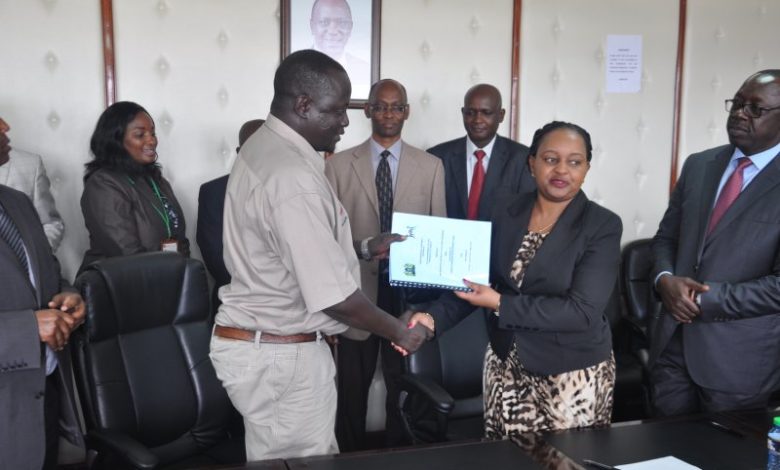How the law changed CDF to NG-CDF

Following the court ruling on 20th February 2015 the High Court declared the CDF Act 2013 unconstitutional hence invalid. The court stated in No. 139 of its ruling:
“First, the Act establishes CDF as a mechanism that runs parallel the constitutionally recognised governance structures. By charging it with local projects under section 22 of the CDF Act threatens to upset the division of functions between the national and county levels of governments and interfere with the county government autonomy. … “
“…By involving Members of Parliament in the planning, approval and implementation of the CDF projects, the CDF Act violates the doctrine of separation of powers between the executive and legislative functions. It also undermines some key national values and principles of governance including devolution of power, accountability and good governance.”
The order of invalidity was however suspended for a period of twelve (12) months, during which the court gave the National Government an option of addressing the anomalies in the Act by way of either an Amendment or repeal of the entire CDF Act.
Finally the National Government Constituencies Development Fund (NG-CDF) Act 2015 replaced the Constituencies Development Fund (CDF) Act 2013 with effect from 19th February 2016.
It remains to be seen though, if the constitutionality of the NG-CDF Act will be successfully challenged again. Some say it did not change enough to fulfil the requirements of the High Court ruling. The very NGOs that had filed the successful petition have stated that they will go to court again because they say the NG-CDF creates “a third level of government not contemplated in the constitution” (source, ext. link).
Who manages the Fund?
The Fund is managed by the National Government Constituencies Development Fund Board (NG-CDF Board) at the National level. Meanwhile, the National Government Constituency Development Fund Committees (NG-CDFC) are charged with the responsibility of ensuring participatory project identification; and planning, monitoring and evaluation of projects in each constituency
The NG-CDF Board
The Board is a body corporate with perpetual succession and a common seal. It is capable of suing and being sued; procuring; borrowing money or making investments and performing all other duties for the proper performance of its functions as per the NG-CDF ACT, 2015
Key changes brought about by the NG-CDF Act 2015
a) Clear provision on objects of the Act (section 3 of NG-CDF Act)
The objects of the Fund are now clearly provided for in the Act by clearly defining the Fund as specific to the National Government in the furtherance of its functions.
b) Clear specification on the establishment of the fund (Section 4 of NG- CDF Act)
The Act specifies that the Fund is drawn from the National Government’s Share of revenue in accordance with the Division of Revenue Act enacted pursuant to Article 218 of the Constitution.
This provision serves to correct the view that CDF Act introduces a third level of Revenue Sharing contrary to the constitution, as highlighted in the High Court ruling.
c) Nature of projects to be funded (section 24 of the NG-CDF Act)
The eligible projects under the NG-CDF Act are only those entailing works or services falling under the functions of the National Government as provided for in the constitution.
This is an important provision in compliance with the ruling of the High Court, which determined that the Act as earlier formulated violated the principle of separation of functions between the National and County governments as provided for in the fourth schedule of the constitution, by connoting that CDF can implement any project regardless of whether it falls under the functions of the County or National government
d) Tenure of office for the National Government Constituency Development Fund Committee (section 43 sub sections 8 of the NG-CDF Act)
The term of office of the members of the Constituency Committee shall be two years and shall be renewable, but shall expire upon the appointment of a new Constituency Committee.
e) Introduction of Social Security Programmes as eligible development projects (section 48 of NG-CDF Act)
Section 43 of the NG-CDF Act 2015 introduces Social Security Programmes as eligible development initiatives under the Fund, enhances the ceiling of allocation to education bursary schemes, mock examinations, and continuous assessment tests from 25 per cent of annual constituency allocation to 35 per cent.
The rationale is to provide for greater focus on education as a National Government function and also to cater for Social Security programmes, which is a newly proposed type of project under CDF.
f) Introduction of Constituency Oversight Committee (section 53 of NG-CDF Act)
The Act introduces an additional committee at the Constituency level, the Constituency Oversight Committee whose main function is to oversee the projects undertaken under the Act and to sensitize and receive feedback from members of the public during forums convened for the said purpose.”
End of Quote
There are still fights over the CDF funds, and some, like Dismas Kiprono of Article19 East Africa say the provisions are and remain unconstitutional. He earlier elaborated in his blog that: “MPs must forget the good old days when they could appeal to voters through CDF. The Constitution has taken money and resources closer to the people through devolution and county governments.”
While reporting about achievements and failures of CDF and NG-CDF you should have this controversy in mind.